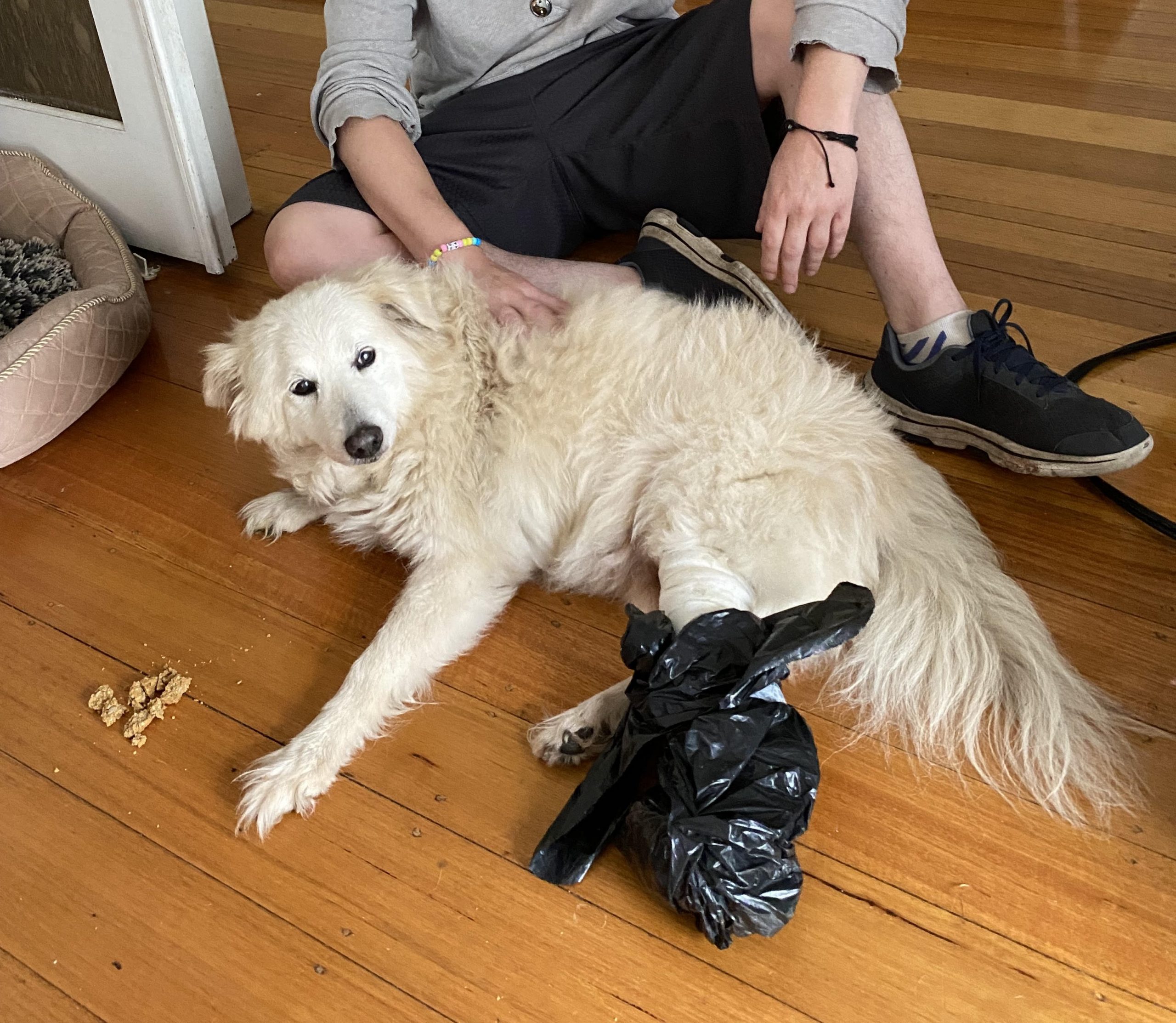

All about Labrador Retriever
One of the most popular breeds, known for its friendly and outgoing nature.
Introduction
The Labrador Retriever, commonly known as the Labrador or Lab, is a breed that has captured the hearts of dog enthusiasts around the world. This friendly, intelligent, and loyal breed is among the most popular and versatile, making it an ideal choice for families, singles, and professionals alike. With their gentle nature, eagerness to please, and incredible adaptability, Labradors have become the epitome of what a loyal companion should be.
Physical Description
| Weight | 25-36 kg (55-80 lbs) |
|---|---|
| Height | 54-62 cm (21-24 inches) |
| Coat Length | Have short, dense coats that are water-resistant and perfect for their original job as fish retrievers. |
| Colour | Black, yellow, and chocolate. |
Breed History
Labradors has a rich history that dates back to the early 19th century. The breed originated in Newfoundland, Canada, where it was known as the St. John’s Water Dog or the Lesser Newfoundland. These dogs were bred for their exceptional retrieving abilities, assisting fishermen in pulling in nets and retrieving fish.
In the early 1800s, British nobles and sportsmen took notice of the breed’s impressive skills and began importing them to England. The breed was further refined in England, with breeders focusing on developing its retrieving capabilities and temperament. The name “Labrador” was adopted to distinguish the breed from the larger Newfoundland dogs.
Labrador Retrievers in Australia were first introduced in the early 20th century. The breed’s popularity in Australia grew steadily, and the Labrador Retriever Club of New South Wales was established in 1953. This club was dedicated to promoting the breed and ensuring that the quality and standards were maintained. Australian Labradors have been used for various purposes, including hunting, search and rescue, and as assistance dogs for people with disabilities. Today, the breed continues to be a popular choice for Australian families due to their intelligent, loyal, and friendly nature.
Personality
Labradors are incredibly social animals. They love nothing more than spending time with their humans, and they thrive on human interaction. Whether you’re taking them for a walk or snuggling up on the couch, your labrador will always be by your side, wagging their tail and showering you with love.
Another aspect of the labrador’s personality that makes them so endearing is their boundless energy. These pups are always ready for a game of fetch or a run around the park. They love to play and have fun, and their enthusiasm is contagious.
Labradors are often referred to as velcro dogs because they tend to form strong bonds with their owners and enjoy being in close proximity to them. Labrador will often lean against a person as a way of showing trust and a desire for affection. This characteristic posture is known as the Labrador lean.
But perhaps the most defining characteristic of the labrador breed is their unwavering loyalty. Labradors are fiercely devoted to their families, and they will do anything to protect and care for them. While they may not possess the same guarding instincts as some other breeds (they are too friendly for that), they can still exhibit alertness and serve as effective watchdogs.
In addition to their friendly nature, Labs are famously energetic and require plenty of exercise, to prevent their high energy levels from turning destructive. Common destructive behaviours include chewing, digging, and excessive barking. Chewing is particularly common due to the strong retrieve urge, which gives them an oral fixation. Luckily, training, exercise, and durable chew toys can tame this behaviour.
When comparing Golden Retrievers and Labrador Retrievers, it’s important to note the unique personality traits that set them apart, despite their shared friendly and playful nature. While Labrador Retrievers were first bred in Canada, Golden Retrievers originally come from the Scottish Highlands. They were bred as gun dogs, specifically for their large yet gentle mouths, which could retrieve prey without causing damage. Golden Retrievers tend to be more attached and reliant on their owners, seeking constant companionship and affection. They thrive on competition and may approach new situations more cautiously. In contrast, Labradors are generally more independent, requiring less constant attention compared to Golden Retrievers. They are less focused on competition and often dive fearlessly into new experiences.

Things you should know about Labrador Retriever
Labrador dogs, known for their high energy levels, need enough space to move around freely. A spacious living area or a backyard with plenty of room to run and play is ideal.
Since Labradors are known to be chewers, it is important to choose furniture and décor that is sturdy and durable. Avoid fragile items that can easily break, as this can be a potential hazard for your pet (and your budget).
Provide your Labrador with a comfortable sleeping area. A cozy bed that is soft and supportive can help prevent joint problems and ensure a good night’s rest.
Exercise Needs
Labradors have high energy levels and require at least an hour of intense exercise daily. This can include running, swimming, or playing fetch. Regular exercise helps to keep your Lab healthy and happy, preventing obesity and other health issues.
Grooming Needs
Labrador Retrievers have a short, dense double coat that requires regular brushing (1-2 times a week) to remove loose hair and minimise shedding. Bathe them as needed, and trim their nails regularly to prevent overgrowth. Check and clean their ears regularly to avoid infections, and brush their teeth frequently to maintain good dental hygiene.
Teeth and Dental Considerations
Dental care is important for Labrador Retrievers to maintain their overall health. Regular teeth brushing, ideally, once a day, can help prevent plaque buildup and periodontal disease. Additionally, providing dental chews and toys can assist in maintaining their dental health. Establishing a dental care routine early in your dog’s life is essential to avoid future dental issues.
Price Check: How Much Is That Doggy in the Window?
A Labrador Retriever puppy typically costs between $1,500 to $3,0000. Still, prices can range from $800 to more than $5,000 depending on factors such as the quality of the breeder, type of Labrador, coat colour, location, and demand. Yellow and brown Labs might be slightly more expensive than black Labs due to their recessive colouring genes. Keep in mind that this price range is for well-bred puppies from health-tested parents and includes initial vaccinations, microchipping, and registration papers. Additional costs, such as ongoing care, food, and veterinary expenses, should also be considered when budgeting for a new pet. It’s essential to research and choose a reputable breeder to ensure a healthy and well-adjusted Labrador puppy.
Choosing a Breeder: The Paw-perfect Match
Look for a responsible and experienced breeder who prioritises the health and temperament of their dogs. Reputable breeders will be knowledgeable about the breed, perform health screenings on the parents, and provide a clean, safe environment for the puppies.
Another important factor to consider when looking for a Labrador puppy is where to find the right one. While there are plenty of pet stores and online marketplaces that sell puppies, it’s best to avoid those sources as they often come from puppy mills or other unethical breeding practices. Instead, look for local breeders or rescue organisations specialising in Labrador breeds. These sources will not only provide you with a healthy and well-socialized puppy but also allow you to learn more about the breed and its specific needs.
If you’re looking for reputable Labrador Retriever breeders, consider ANKC (Australian National Kennel Council) registered breeders to ensure you’re getting a healthy and well-bred puppy. There are various Labrador clubs nationwide, such as the Labrador Club of NSW, which list reputable breeders.
Finding the Right Puppy: Love at First Sniff
Labrador Retriever puppies can be found through various sources. One option is to deal directly with a registered breeder, as they often have ANKC-registered puppies for sale. You can also search for Labradors in the Dogs & Puppies category on Gumtree, where people buy and sell various items, including puppies. Another resource is the list of top breeders in different Australian cities provided RightPaw. Good breeders focus on producing healthy, well-adjusted, and socially integrated Labrador puppies with gentle temperaments, suitable for families, show dogs, or working dogs.
When it comes to choosing toys for your Labrador, it’s important to consider their size and strength. Labradors are strong dogs, and they need toys that can withstand their powerful jaws and energetic play. Some of the best toys for Labradors include chew toys, tug toys, and interactive toys that require problem-solving skills. Frisbees and balls are also popular choices, as they allow your Labrador to burn off excess energy and engage in a fun game of fetch.
In addition to toys, many great games are perfect for Labradors. Agility courses, for example, are a great way to provide your dog with physical exercise while also improving its agility and coordination. Obedience training is also important for Labradors, as it can help them to become better behaved and more obedient. Puzzle games, such as treat-dispensing toys, can also provide mental stimulation and keep your dog entertained for hours.
Overall, there are many great toys and games available for Labradors that can provide them with the exercise, stimulation, and entertainment they need to stay healthy and happy. Whether you choose to chew toys, interactive toys, or games like agility courses and obedience training, your Labrador is sure to appreciate the effort you put into keeping them engaged and fulfilled.
Common Ailments
Labradors are generally healthy dogs but are predisposed to certain health issues. Common ailments in Labradors include:
Hip and Elbow Dysplasia are common joint issues among Labrador Retrievers. These conditions affect the hip and elbow joints, prohibiting normal movement and causing pain and immobility. Luckily, you lessen the effects of these conditions on your dog by ensuring they maintain a healthy weight, eat high-quality nutritional food, and engage in low-impact exercise such as swimming.
Osteoarthritis is another common joint issue that can affect Labs and is often caused by old age. Arthritis occurs in 90% of older dogs and 20% of middle-aged dogs. Behaviours such as hesitating to jump down from the couch, struggling to get up in the morning, or being grumpier or more aggressive may indicate the onset of arthritis.
To help combat the symptoms of arthritis and create a comfortable environment for your dog, you should provide a warm sleeping area with heavily padded bedding and assist your dog with getting up and down from high places.
Maintaining a healthy weight is one of the most effective measures to control arthritis. It may be combined with multiple short daily walks, arthritis supplements, and pet-friendly pain relief if necessary. Always seek the advice of a trusted vet who will help you manage your dog’s arthritis symptoms.
Labradors have a tendency to gain weight, which can lead to other health problems. Monitoring food intake and providing regular exercise can help prevent obesity.aLabradors, particularly puppies, tend to chew and swallow objects they come across. Common examples include socks, underwear, toys, rocks, sticks, or even non-edible household items. This behaviour can be due to teething, boredom, anxiety, or simply out of curiosity. While these items often come out the other side, sometimes they don’t and can require medical intervention and even surgery to treat it.
Gastric Dilation-Volvulus (GDV), more commonly known as ‘Bloat,’ is a serious condition Labradors, along with other deep-chested breeds, are more at risk of developing. While bloating in humans refers to harmless water weight, bloating in Labradors involves a swollen or twisted stomach which can be fatal.
Symptoms of GDV include:
- a visibly distended stomach/looking bloated
- looking anxious
- drooling
- pacing
- looking at their stomach
- trying to vomit with nothing coming up
- depression and lethargy as the condition progresses
Although the exact cause of bloat has yet to be found, you should avoid letting your dog overeat or over-hydrate to lessen the risk of bloat. If your dog has any symptoms and you’re concerned that they may have bloat, take them to the vet right away.
We all know, and love labradors’ signature floppy ears, however, their ear shape and the tendency to trap moisture can make them more susceptible to ear infections. To avoid ear infections, keep your dog’s ears clean and dry. After bathing or swimming, make sure to dry your Labrador’s ears thoroughly. Consider having a groomer remove excess hair around the ear area to promote better air circulation.
Symptoms of ear infections include:
- red or inflamed ears, and a black/brown or yellow/green discharge may be seen
- strong odour
- constant scratching or shaking of the head
- swelling around the ear
- whimpering due to discomfort
Regularly check your dog’s ears for signs of infection, such as redness, swelling, discharge, or a foul odour. If you notice any abnormalities, consult with your vet for proper diagnosis and treatment.
Tricuspid Valve Dysplasia (TVD) is the most common heart defect among Labrador Retrievers and occurs when the tricuspid valve (one of four heart valves) forms improperly during embryonic development. The defect ranges from mild to severe, with severe cases often resulting in congestive heart failure within the first few years of life.
Some affected dogs live comfortably and have a normal life span. A heart murmur, which is usually the first sign of an issue, can be subtle, meaning TVD is often difficult to diagnose. The main diagnostic tools used to diagnose TVDs are an echocardiogram or ultrasound of the heart.
Treatment for TVD provides palliative care, including diuretics to reduce fluid build-up and medication to help reduce the workload on the heart and improve its pumping abilities. However, such treatments don’t cure the defect.
Hypothyroidism occurs when your dog’s body doesn’t produce enough of the thyroid hormone, which is responsible for controlling their metabolism and the absorption of fats, carbohydrates, vitamins and minerals. Common symptoms of hypothyroidism include:
- unexplained weight gain
- lethargy
- recurring skin, toenail, or ear infections
- excessive shedding or hair loss
- intolerance to cold
To diagnose Hypothyroidism, your Lab will undergo a blood test to check the level of thyroid hormone in the blood. If the levels of this hormone are found to be low, your vet will likely send the blood samples to a referral laboratory for further testing.
If a diagnosis of hypothyroidism is confirmed, treatment typically involves hormone replacement therapy, usually in the form of a synthetic thyroid hormone called levothyroxine. This medication helps to restore normal thyroid hormone levels and support proper metabolic function.
Laryngeal paralysis is a disease of the upper airway and occurs when the cartilage of the larynx doesn’t open and close properly. This disease affects other breeds, but Labrador Retrievers have a higher incidence rate than most.
Laryngeal paralysis is characterised by symptoms such as a dry cough, voice changes, and noisy breathing in affected dogs. As the condition progresses, dogs may experience increasing difficulty breathing, especially during stress and exertion, and may eventually collapse. Regurgitation and vomiting can also occur. The progression of symptoms is typically slow, often taking months or even years.
The diagnosis of laryngeal paralysis typically involves an examination of the upper airway using a laryngoscope, which is performed under light anesthesia. Tranquillisers and corticosteroids can provide temporary relief for mild cases, but severe obstruction may necessitate more invasive measures such as a tracheotomy (the insertion of a tube into the trachea) or surgery to address the underlying problem.
Obesity is a common issue among many breeds of dogs. Labradors, in particular, are at risk of obesity because they love to eat and can be known to attempt to eat everything in sight, including rubbish, children’s toys and socks.
To help your dog maintain a healthy weight, provide your dog with plenty of exercise and measure out regular meals rather than leaving food out all day. By monitoring your dog’s portions and ensuring they don’t overeat, you can prevent obesity.
Conclusion
Considering both the upfront costs of a puppy and the ongoing costs will help you make a responsible, well-informed decision about whether you can afford the commitment of a Labrador.
If you have a new Labrador Retriever and you’re looking for award-winning pet insurance, get in contact with our friendly staff at Knose, and we’ll help find the right plan for you and your pet.

Explore more breeds


French Bulldog

Labradoodle

Border Collie

Cavoodle
Frequently Asked Questions
What does Knose Pet Insurance cover?
We’ve got your back for accidents, injuries, illnesses, and even essential euthanasia. You can also add optional extras like dental illness, behavioural conditions, and specialised therapies to suit your pet’s unique needs.
Pet insurance helps cover unexpected vet bills, so you can focus on giving your pet the care they need. With Knose, you can pay a monthly premium, and if your pet needs vet care due to an illness or accident, we reimburse a portion of the costs. It’s a straightforward way to manage unexpected expenses and get peace of mind.
Learn more about pet insurance.
The best pet insurance is the one that meets your pet’s unique needs. Look at factors like the annual limit, benefit percentage, optional extras (like dental or behavioural cover), and any exclusions. Make sure to compare pet insurance plans wisely. At Knose, we offer customisable options to give you cover that suits you and your pet.
Yes, we can! Dental illness cover is available as an optional extra. It covers treatment for dental diseases affecting your pet’s teeth and gums but doesn’t include routine cleanings unless needed to treat a covered dental illness.
Yes, but only if you choose the optional extra for behavioural conditions during your application. This covers treatment costs for things like anxiety, excessive licking, and other behavioural disorders, helping your pet get the support they need.
Making a claim is a breeze. Log in to your Knose account and submit your claim online with a copy of the vet invoice. Your vet can also email the invoice to claims@knose.com.au. We might need a bit more info, like your pet’s medical history, to process your claim, and in that case, we can reach out to your vet directly.
Most claims are processed within five (5) business days once we have all the necessary information and documents. We like to keep things moving quickly so you can focus on your pet.
Insurer looks at several factors, including your pet’s species, breed, age, location, and our claims experience. As your pet ages or as vet costs rise, your premium may change.
Tidbits on Pets, Life and Insurance.

Knose at the Sydney Dog Lovers Festival 2024
29 August 2024
Guide to Puppy Socialisation
5 July 2024
Play-based dog training for beginners
29 May 2024
3 Dog Training Myths debunked!
15 May 2024
Is parenting and raising a puppy the same?
16 April 2024

